Many do. Snakes love holes.
Many species spend much of their time in holes. It makes them feel safe and secure.
And holes have plenty of other benefits, too.
But snakes have no arms and no legs. How can they possibly make the holes they love so much?
One snake, perhaps the world’s cutest, has a brilliant adaptation that allows it to dig, even without any limbs.
But what about the rest of them? The snakes without this evolutionary adaptation?
Keep reading to find out.
Table of Contents
How Do Snakes Dig Holes?
Holes might be a snake’s favorite hideout, but they are generally incapable of digging holes themselves. Instead, snakes take advantage of burrows left by other animals (most often rodents) to find the protection and warmth they seek.
The one exception is the hognose snake. It has evolved to have a super cute upturned nose that it uses to dig holes. We’ll have more on this snake below.
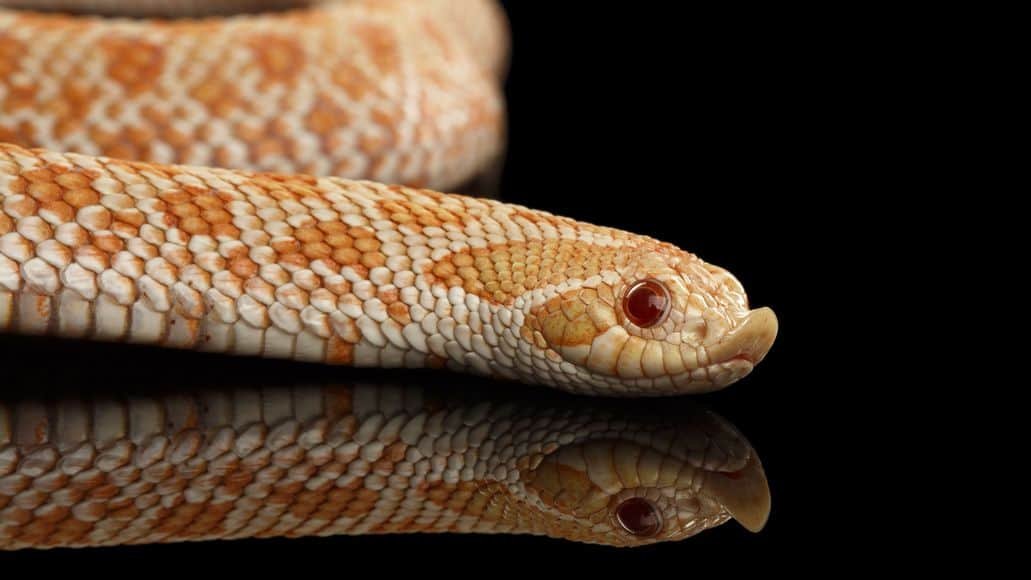
The Benefits Of Snake Holes
Snakes like sheltering in cool, dark places, which is why they love burrowing underground. These nests provide many benefits for snakes.
Protection
Snakes spend most of their time hiding from predators, and they prefer to stay out of sight whenever possible. A hole offers them a safe place tucked away from the clutches of predators and out of view of the sharp eyes of birds of prey.
Snakes also find protection from the elements while in their holes. Being underground protects them from the cold and rain, or from the heat of the sun, if it’s a particularly hot day out.
Security
A fed snake needs somewhere to rest and digest. A hole is the perfect place to stay secure until it needs to go hunt again. Nests are also ideal when the time comes to lay eggs or give birth.
Brumation
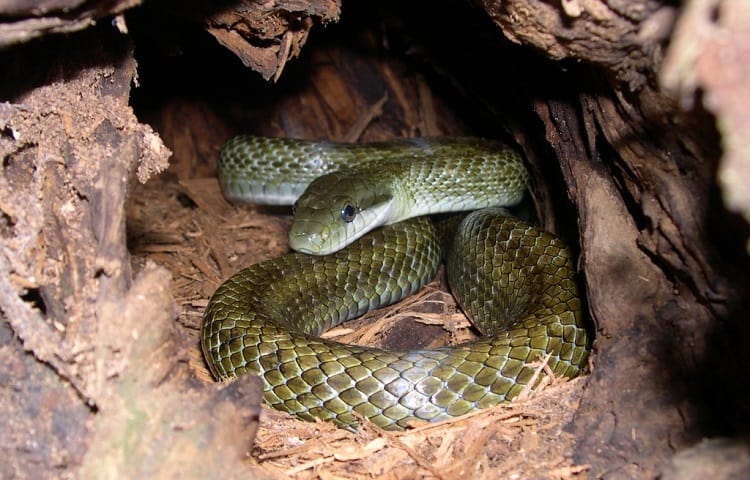
Snakes use their holes to keep warm while brumating, the reptile equivalent of hibernation. Though most stay close to the surface during this time, some species prefer to go deep underground.
Predation
Inhabiting a hole makes it easier for the snake to catch its next meal. It is a great place to lie in wait for unsuspecting prey to pass by.
Some prey, like rabbits and rodents, may actually try to use the same hole the snake is in, allowing the snake to eat without having to go anywhere.
Camouflage
Snakes like to nest in holes similar in color to them, which camouflages them more easily. Blending into their environment also makes it easier to hunt unsuspecting prey passing close by the hole.
Hole Digging As A Snake
As mentioned above, snakes do not dig holes. Their body shape is ill-suited for this task.
Snakes can shimmy under loose soil, mud, sand, or leaf litter, but they can’t generally dig or excavate into the packed earth. They don’t dig holes in mulch either, though some species can push their way underneath it.
But there is one major exception. The previously-mentioned hognose snake has an upturned snout adapted to digging. As a result, it can dig its own holes.
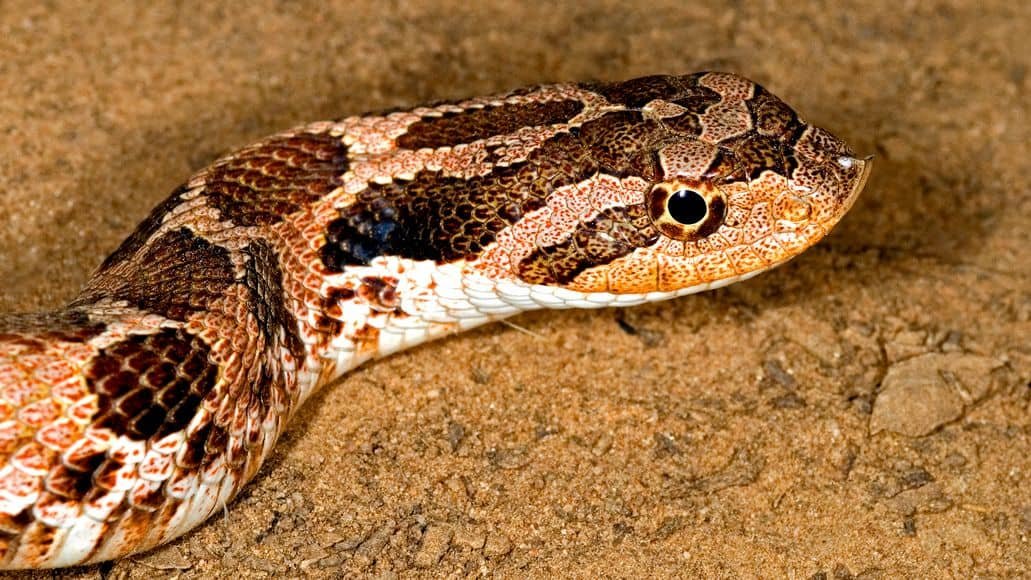
But most other snakes don’t have this type of adapted nose. The most they can do is bury themselves, but this activity doesn’t produce the kind of hole a snake wants for its home.
Luckily, snakes have plenty of opportunities to appropriate the homes of other animals that are adept at digging. Rodents create elaborate underground burrows with several exits for protection, and snakes love to take over these burrows.
They often eat the inhabitants in the process, and once they’re cozy, the snakes repurpose the hole to their needs. However, some snakes will only inhabit a hole if they know it’s empty.
Snake Hole Characteristics
Snakes are picky when it comes to the characteristics of their hideouts. Not just any hole will do.
The number one requirement is that it be nice and snug. Ideally, the snake’s back touches the burrow ceiling. This makes it feel secure and comfortable.
Where we can observe more variation is in the types of burrows and nests that different species prefer. Some like to blend in with bark or leaves. Others like nesting in holes in trees high above the ground.
However, snakes are opportunistic creatures, and they will often use any available hole. Additionally, they don’t form attachments to any one hole. They look for a spot that satisfies their needs at the moment and are quick to move on when necessary.
What Snake Holes Look Like
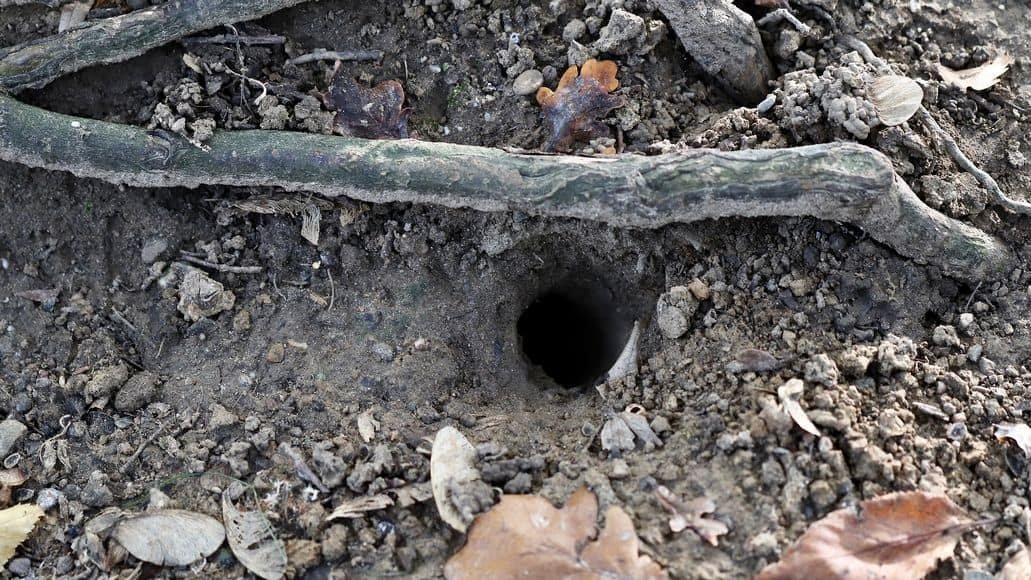
What does a snake nest look like? They can be difficult to identify, because they always look different.
But if they dig it themselves, snake holes are always circular. Though they can vary somewhat in size, they’re typically small–otherwise, a snake wouldn’t feel secure enough to make its home there.
You can find snake holes in a variety of places, like embedded in the grass. It’s also not uncommon to see them in trees or large concrete cracks.
How To Tell If A Snake Hole Is Vacant
The best way to determine if a snake hole is occupied is to see the snake. If you’ve been keeping an eye out and haven’t been able to see the snake, there are a few ways to determine the status of the hole.
- Look for spiderwebs or debris surrounding the hole. This is the best way to determine whether a snake is in the nest. If these obstructions are present, it’s likely that the hole is empty.
- Look for a snake skin. Snake skin is another indicator that a snake has been in the area.
- Look for snake feces. The presence of snake feces tells you that a snake is likely living in the nest. Snake droppings are dark and tubular, and sometimes they have chalky white urine streaks in some areas. You may also find remnants of their prey, such as hair and bone fragments.
How To Cover A Snake Hole
If you have a snake hole on your property, you should check to make sure the hole is empty before attempting to cover it.
Once you’re confident that the hole is vacant, the way you cover it depends on where the hole is. Remember never to put your hand in a hole as you may get bitten.
Holes located in the open can simply be filled back in with dirt. You may need a more aggressive plan of attack for holes located in structures or under a porch.
Try covering these nests with wiring, netting, or burlap, which will keep snakes from coming back to them.
If you need help, don’t hesitate to reach out to a professional. An expert can help you with safe and humane snake removal, and they can provide tips for preventing future snake infestations near your home.
Snakes Digging Holes: Final Thoughts
How do snakes dig holes with no hands or feet? As you might suspect, they actually can’t dig holes, with the exception of the hognose snake. Apart from that one species, the rest can burrow, but nothing more.
That is why they simply take over the holes belonging to other animals, like rodents or rabbit. The inhabitants are forcefully moved out (or often eaten) and the snake moves in.
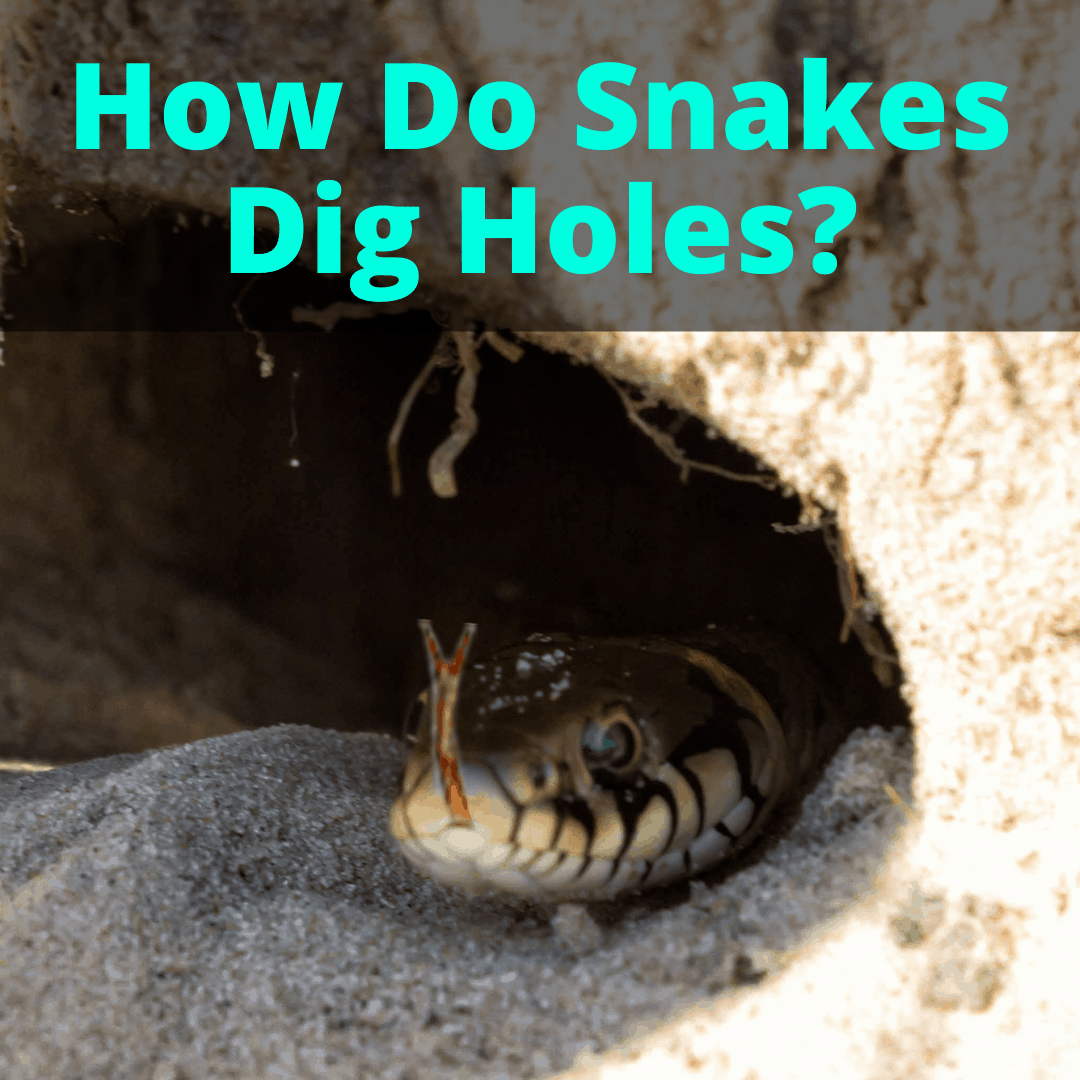
Leave a Reply